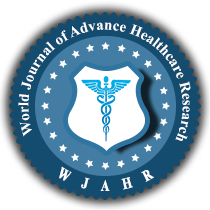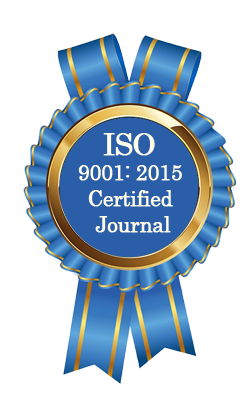| All | Since 2020 | |
| Citation | 105 | 60 |
| h-index | 4 | 4 |
| i10-index | 3 | 2 |
WJAHR Citation 
Login
News & Updation
Best Article Awards
World Journal of Advance Healthcare Research (WJAHR) is giving Best Article Award in every Issue for Best Article and Issue Certificate of Appreciation to the Authors to promote research activity of scholar.
Best Article of current issue
Download Article : Click here
Indexing
Abstract
PHYSICAL AND PALYNOLOGICAL STUDIES IN HONEY SAMPLES COLLECTED FROM UTTAR KANNADA AND SHIVAMOGGA DISTRICTS OF KARNATAKA, INDIA
Swathi K. A., Sindhushree D. H. and S. Basavarajappa*
ABSTRACT
The physical and palynological studies were conducted in honey samples collected from Uttar Kannada (130551 0211 to 150 31’ 01” N lat. and 7400 13511 to 750101 2311E long.) and Shivamogga (13°27’ to 14°39’ N lat. and 74°38' to 76°04' E long.) districts using various standard methods. Total 12 honey samples were randomly selected and analyzed for their colour, electrical conductivity and pollen grains composition. The honey colour was extra light amber (35-50 mm) to light amber (51-80 mm) and few honey samples showed light colour (18-34 mm) as per Pfund scale. The electric conductivity was ranged between 0.092 and 0.198 which was <0.8ms/cm as per Codex Standards. The pollen grains density, dominance index and pollen types belonged to 33 plant species in 23 families and didn’t indicate significant variation (F=0.421; P<0.05) between honey samples. The Shannon diversity Index was ranged between 2.208 and 1.753; Fisher alpha value ranged between 4.839 and 2.831 and suggested a variation existed between the different pollen grains. Moreover, Simpson and Shannon ‘J’ (Equitability) indices revealed that distribution of majority of pollen grains within the honey samples collected from different places in Uttar Kannada District was 0.818 to 0.745 and 0.764 to 0.635 in the honey samples of Shivamogga District, suggested unevenness. Further, the Sorenson’s (ß diversity) index ranged between 0.8235 and 0.9473 and confirmed the considerable difference existed among the corbicular pollen grains in different honey samples. The present findings provided preliminary evidences to suggest that there is a considerable specificity existed between natural honeys with specific corbicular pollen grains, which were from different plant sources amidst diversified ecosystems. Although, pollen grains composition is specific, but revealed the floral source and suggested the status of natural honey.
[Full Text Article] [Download Certificate]
